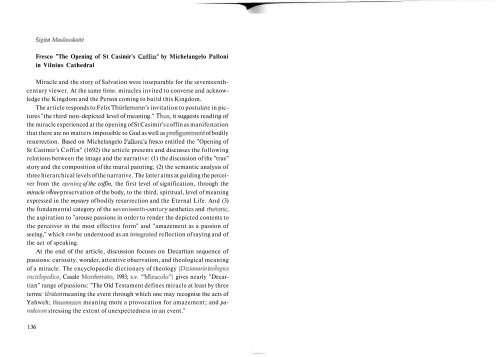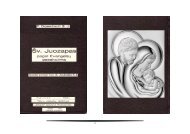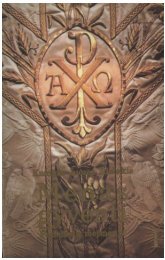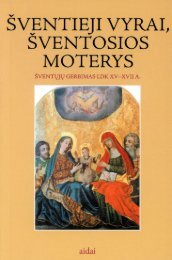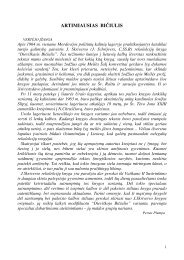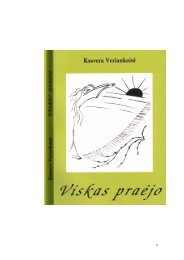You also want an ePaper? Increase the reach of your titles
YUMPU automatically turns print PDFs into web optimized ePapers that Google loves.
Sigita Maslauskaitė<br />
Fresco "The Opening of St Casimir's Coffin" by Michelangelo Palloni<br />
in Vilnius Cathedral<br />
Miracle and the story of Salvation were inseparable for the seventeenthcentury<br />
viewer. At the same time, miracles invited to converse and acknowledge<br />
the Kingdom and the Person coming to build this Kingdom.<br />
The article responds to Felix Thtirlemann's invitation to postulate in pictures<br />
"the third non-depicted level of meaning." Thus, it suggests reading of<br />
the miracle experienced at the opening of St Casimir's coffin as manifestation<br />
that there are no matters impossible to God as well as prefigurement of bodily<br />
resurrection. Based on Michelangelo Palloni's fresco entitled the "Opening of<br />
St Casimir's Coffin" (1692) the article presents and discusses the following<br />
relations between the image and the narrative: (1) the discussion of the "true"<br />
story and the composition of the mural painting; (2) the semantic analysis of<br />
three hierarchical levels of the narrative. The latter aims at guiding the perceiver<br />
from the opening of the coffin, the first level of signification, through the<br />
miracle of tine preservation of the body, to the third, spiritual, level of meaning<br />
expressed in the mystery of bodily resurrection and the Eternal Life. And (3)<br />
the fundamental category of the seventeenth-century aesthetics and rhetoric,<br />
the aspiration to "arouse passions in order to render the depicted contents to<br />
the perceiver in the most effective form" and "amazement as a passion of<br />
seeing," which can be understood as an integrated reflection of saying and of<br />
the act of speaking.<br />
At the end of the article, discussion focuses on Decartian sequence of<br />
passions: curiosity, wonder, attentive observation, and theological meaning<br />
of a miracle. The encyclopaedic dictionary of theology (Diziotmrio teologico<br />
enciclopedico, Casale Monferrato, 1993; s.v. "Miracolo") gives nearly "Decartian"<br />
range of passions: "The Old Testament defines miracle at least by three<br />
terms: tčraton meaning the event through which one may recognise the acts of<br />
Yahweh; thaumasion meaning more a provocation for amazement; and paradaxon<br />
stressing the extent of unexpectedness in an event."<br />
136


